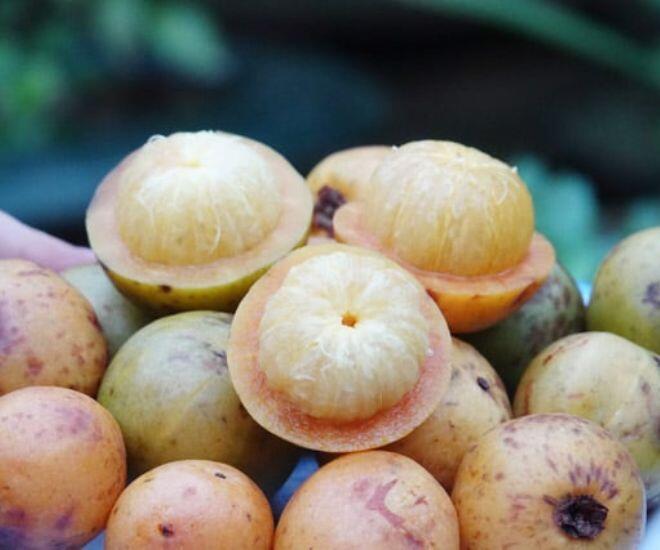
Resembling the mangosteen in shape, the bua fruit, often dubbed the “forest mangosteen,” features a small, round form with a thick rind. When unripe, it boasts a green hue, transforming into a vibrant orange-yellow when fully mature. Inside, the flesh is segmented into juicy lobes, both visually appealing and enticing. Eaters can neatly slice through the rind with a knife or simply peel it by hand, savoring the sweet and tangy flavors that gradually unfold on the palate.
Bua fruits are categorized into two main types. The first is the tower bua, characterized by its large, juicy fruits with a sweetness akin to mangosteen, typically enjoyed fresh. The second type is the gang bua, smaller in size with a pronounced tartness, commonly used in cooking, especially in sour soups or infused in alcohol. While not as sweet as the tower bua, the gang bua offers a uniquely refreshing sourness that is hard to replicate with other fruits.
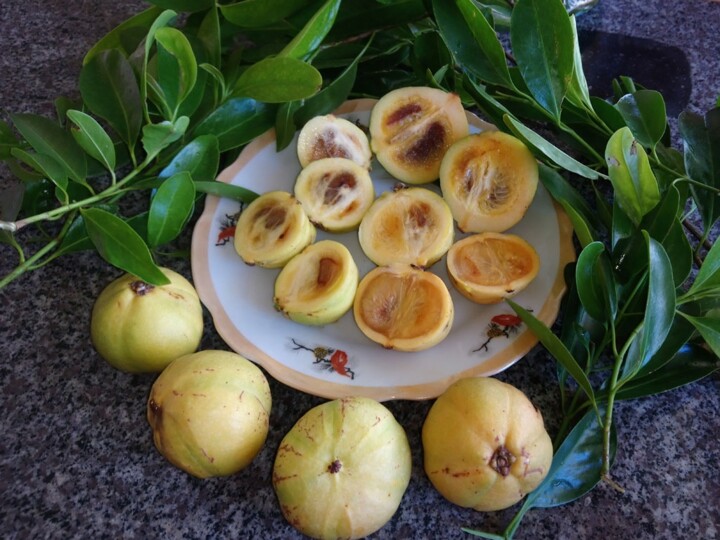
In Quang Ngai, locals prepare bua fruits in various ways. Fresh, ripe bua can be eaten immediately, offering a delightful balance of sweetness and tartness that leaves a lasting impression. For those unaccustomed to it, the rind may initially impart a slight astringency on the tongue, but after a few bites, the mild sweetness and refreshing sourness quickly harmonize the taste buds. Beyond fresh consumption, bua is incorporated into daily dishes. Just one or two fresh bua fruits can elevate a fish soup, making it more enticing. Notably, the island bua, grown in coastal areas, pairs exceptionally well with seafood sour soups, creating a harmonious blend of the sea’s brininess and the forest’s mild sourness.
Beyond fresh use, Quang Ngai residents preserve bua for year-round enjoyment. After harvesting, the fruits are peeled, the flesh extracted, halved or quartered, and sun-dried for one to two days until they darken to a brown-black hue. While dried bua may not be visually appealing, it boasts a rich, distinctive flavor. When added to soups or seafood hotpots, just a few slices of dried bua impart a refreshing sourness that deepens with prolonged cooking, unlike other sour fruits that can leave a harsh aftertaste.
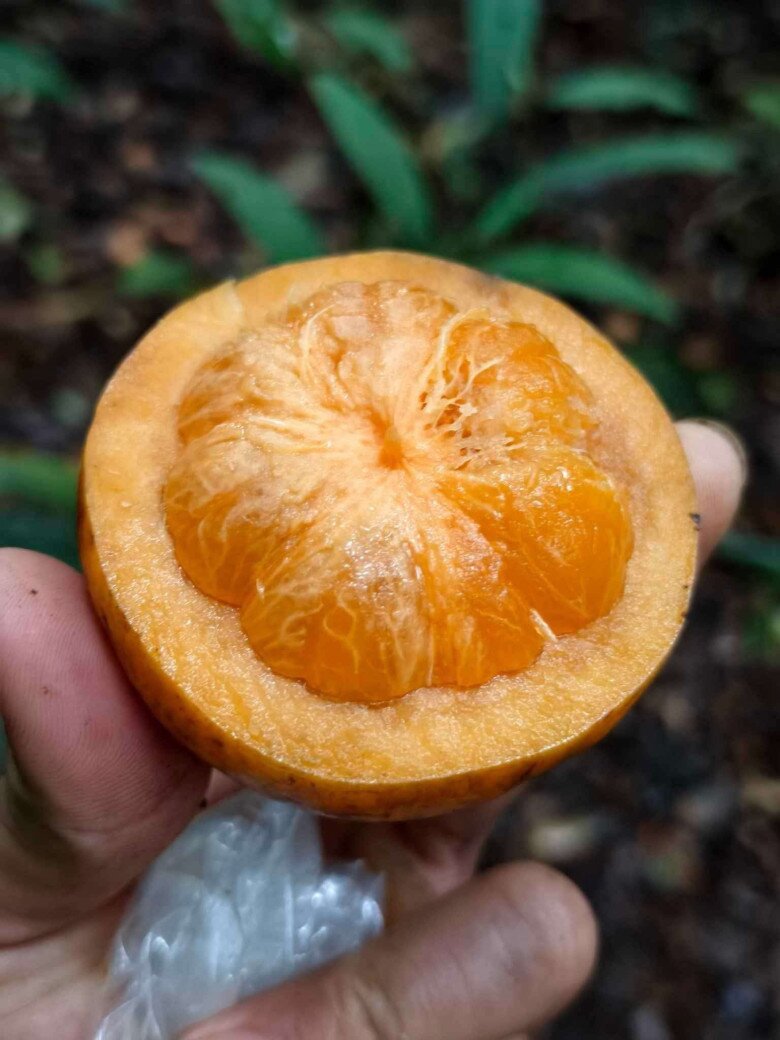
Bua fruits typically ripen around September in the lunar calendar. During this time, amidst the lush greenery, clusters of bright yellow bua fruits stand out, creating a vibrant forest landscape. Locals often gather to harvest bua, both for personal consumption and to sell to passersby or send to other provinces. For mountain children, bua fruit was a familiar treat. After school, they would climb trees or use sticks to knock down the fruits. The sweet and sour taste of bua has become a cherished childhood memory for many generations.
The value of bua fruit extends beyond its flavor to its health benefits. Rich in vitamin C, it boosts immunity. According to traditional wisdom, bua fruit is also used to treat conditions like stomach ulcers, allergies, itching, and digestive issues. Thus, it has long been considered a valuable medicinal herb in the Central region.
Once abundant, bua trees were easily found on the forest edges. However, as natural forests have shrunk and been replaced by acacia and eucalyptus, bua trees have become increasingly rare. Today, they are found only sporadically in deep forests, making the fruit a prized commodity.
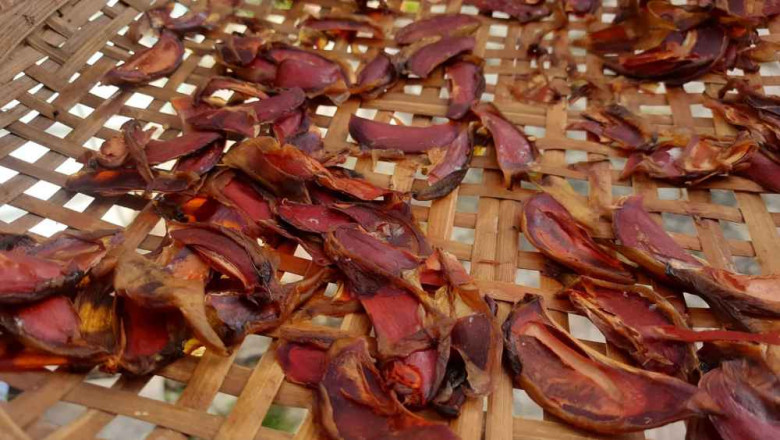
In early autumn, visitors to Quang Ngai, especially Tra Bong district, often encounter street vendors selling fresh bua. Prices range from 25,000 to 30,000 VND per kilogram, depending on the season. During peak season, prices drop as supply increases, but growing demand ensures quick sales. In recent years, forest bua has appeared on e-commerce platforms at around 40,000 VND per kilogram, catering to consumers far from the region.
Beyond fresh consumption, urban consumers favor bua for beverages. The fruit’s pulp can be steeped in sugar to create a syrup for naturally sweet and sour drinks. Some even infuse bua in alcohol, producing a uniquely flavored beverage. Fans of sour fruits often order large quantities, from 5 to 10 kilograms, for both eating and processing. Some customers even pre-order before the season begins, highlighting the fruit’s allure.
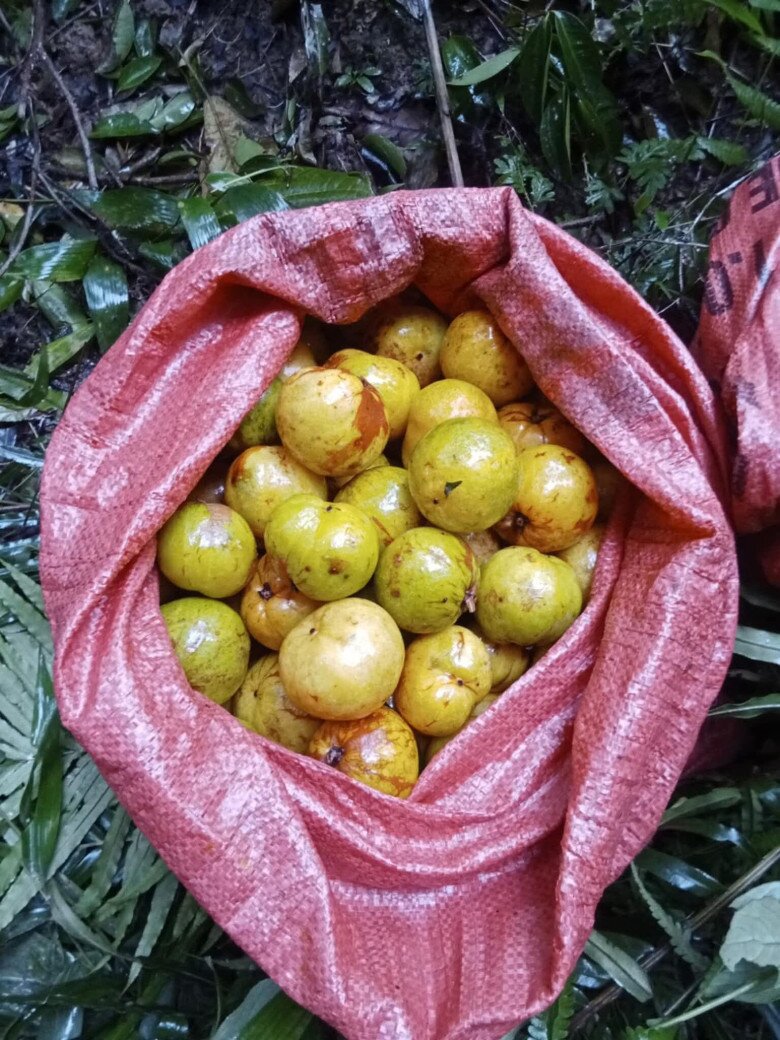
More than just a childhood snack, bua fruit has become a specialty promoting Quang Ngai’s image. Its blend of natural, culinary, and medicinal qualities has garnered increasing attention. Though not as vibrant as other popular fruits, forest bua embodies the authentic essence of the mountains, becoming a highlight in exploring Central Vietnam’s specialties.






























